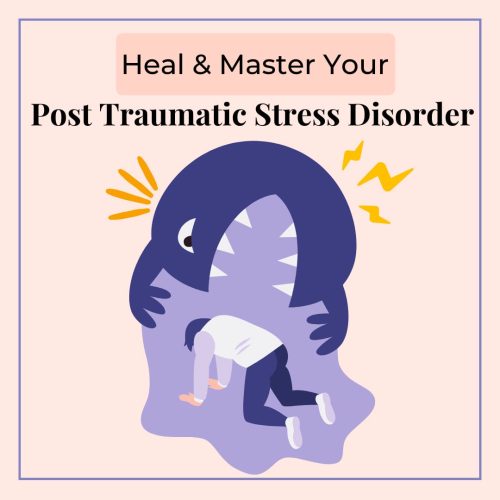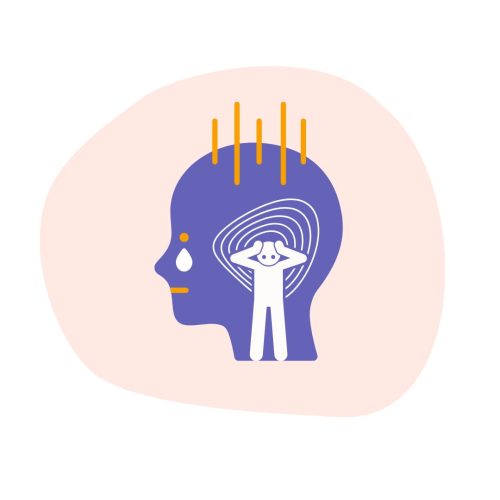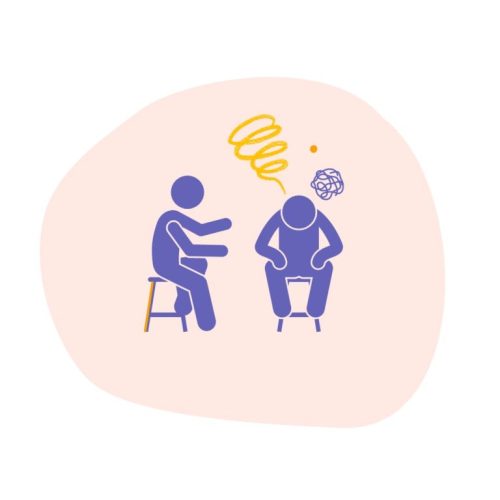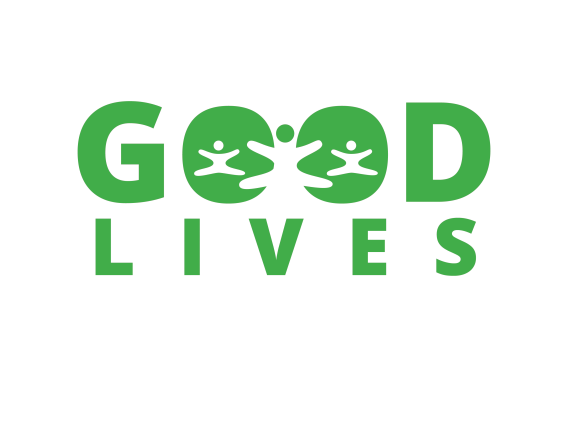Post Traumatic Stress Disorder

Sometimes a single trauma that you experience at some point in your life can affect the rest of your life. The fortunate ones escape with no long-term consequences.
But the trauma stays for millions of others, leading to PTSD symptoms.
Post-traumatic stress disorder (PTSD) is a mental health condition it can happen after experiencing or witnessing a memory of a past traumatic event such as a natural disaster, sexual assault, war, or significant injury. That has caused recurrent mental and physical distress. Symptoms may include nightmares, difficulty sleeping, flashbacks, intrusive thoughts about the event, and anxiety. It is natural to feel upset after a traumatic event. But if the symptoms last for months or even years and interfere with day-to-day activities, you may have PTSD.
Gender Difference of Post Traumatic Stress Disorder
According to the National Center for PTSD, around 10% of women have PTSD sometime in their lives compared to 4% of men. Culture and gender roles are also factors for the high prevalence symptoms of PTSD in women.
17 Symptoms of PTSD to be
Aware about

Post-traumatic stress disorder symptoms can show up within three months of a traumatic event, but they can also appear later. PTSD symptoms may not be the same for everyone. Each person experiences symptoms in their way. Still, everyone with PTSD experiences one or more of the following post-traumatic stress disorder checklist of symptoms.
Avoiding things
- You avoid people or situations that remind you of the event.
- Avoiding thinking about or discussing the traumatic event.
Intrusive memories
- Recurrent, unpleasant recollections of the traumatic experience.
- Flashbacks: flashbacks are more than simply pictures; they can also be emotions or physical sensations; during a flashback, you feel as if you’re back in that horrifying situation again.
- Nightmares
Negative changes in thinking and mood
- Feeling worse about yourself or the world.
- Difficult in maintaining a close relationship.
- Disconnection from family and friends.
- Excessive feelings of guilt or blame.
- Unable to recall important points about the event.
- Feeling emotionally numb.
- Lack of enthusiasm for activities you used to like.
Hyperarousal: Change in physical and emotional reactions
- Easily startled
- Engaging in more risky behavior.
- Hypervigilance
Post-Traumatic Stress Disorder Symptoms in Children
- Play may be used to convey memories, such as playing out scenes that trouble them.
- People who have experienced trauma as children are more prone to develop PTSD in response to other traumas faced in their adult life.
Types of Post Traumatic Stress Disorder

PTSD is one condition, but to make it easier to diagnose and treat the person with PTSD. It is divided into subgroups of post-traumatic stress disorder criteria based on the severity of the PTSD symptoms.
1. Dissociative PTSD:
Dissociation is a mental state in which a person loses touch with their thoughts, feelings, and memories and loses touch with reality.
2. Uncomplicated PTSD:
People who are experiencing PTSD but do not have other additional mental health concerns like depression and only PTSD symptoms such as reliving the traumatic incident, avoiding situations, and persons associated with the trauma. Uncomplicated PTSD is the easiest to treat since the person responds well.
3. Comorbid PTSD:
Is a variety of co-occurring conditions. A person who has PTSD symptoms as well as other mental health problems such as depression or panic disorder, often accompanied by substance abuse issues. People with this type get the best results from treating both PTSD and other mental health issues.
4. Complex PTSD:
This is the opposite of uncomplicated PTSD. It is caused by a series of traumatic incidents. Post-traumatic stress disorder is common in domestic violence or abuse. They show behavioral issues such as aggression, impulsivity, and substance abuse. People with complex PTSD can be diagnosed with borderline personality disorder. Treatment for complicated PTSD can be rather demanding.
Did you know?
Acute stress disorder (ASD) is not the same as post-traumatic stress disorder (PTSD). It is a collection of symptoms such as anxiety and avoidance that appear within a month following a stressful experience. Many persons with ASD develop PTSD later in life.
We sometimes live in such a stressful environment that we forget to appreciate the little pleasures in life. If you want to know more read Finding Happiness in the Little Things|4 simple ways to feel this bliss
Cause of Post Traumatic Stress Disorder
Ptsd is caused by a traumatic event. Experts aren’t sure why people get PTSD and others don’t. However, any experience that causes dread, shock, terror, or helplessness might result in PTSD.
- Family history of anxiety and depression.
- The process through which your brain controls the chemicals and hormones released by your body in reaction to stress.
- Stressful experiences and the severity of the trauma.
Depression is a battle, but before you can fight back, you must first recognize the warning signs. Read about
8 Critical Signs of Depression in Teenagers & How to Avoid them
Treatment of Post Traumatic Stress Disorder to Combat PTSD Symptoms
Treatment for PTSD can be difficult since persons with the disorder are frequently hesitant to interact with the trauma in any manner, making treatment hard.
1. Exposure therapy:
Slowly exposing individuals to events that trigger trauma memory might help them feel like they have greater control over their thoughts and feelings. However, the medication’s effectiveness is in doubt, and it must be taken with caution, or can worsen the symptoms.
2. Cognitive processing therapy (CPT):
This is cognitive-behavioral therapy. The individual learns to think differently. Mental imagery of the traumatic incident may assist individuals in working through the trauma and gaining control of their fear.
3. Eye movement desensitization and reprocessing:
EMDR is an evidence-based treatment that has proved to be effective. A qualified therapist will encourage you to think about trauma while shifting your eyes back and forth, left to right, to reduce the intensity of traumatic memories. That will eventually assist your brain in reprocessing the memories so that they no longer cause as much pain.
4. Medication:
There are medications that can help alleviate the depressive symptoms associated with post-traumatic stress disorder and can help in minimizing flashbacks and nightmares. Anti-anxiety drugs can help reduce heightened physiological arousal. That is common in individuals with PTSD, and sleep aids can also be beneficial because lack of sleep and restlessness is a severe problem in people with post traumatic stress disorder.
Both therapy and medication help to alleviate post traumatic stress disorder symptoms and also safely manage substance abuse issues. Some individuals use drugs and alcohol to avoid upsetting memories. However, this can actually worsen their symptoms and overall health.
A person with PTSD usually indicates that traumatic memories have become a problem in their lives, and this is when they may need help. GoodLives can be a good start, to begin with.
